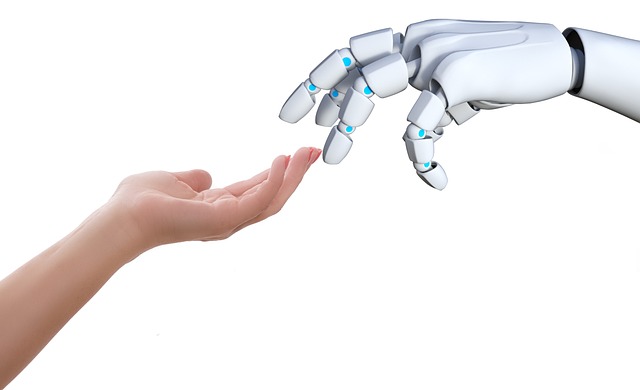Manufacturing is standing at a strange crossroads. Legacy systems are still running the floor in many places, but the pressure around them has changed. Everything now runs on tighter turnarounds, higher precision, and zero room for error. Customers expect everything faster. Supply chains are more complex. Mistakes cost more.
That shift is pushing automation from nice-to-have to non-negotiable. Industrial robots are no longer just tools for the mega-factories—they’re becoming must-haves for any outfit that wants to keep up. They work faster, don’t tire, repeat tasks with pinpoint accuracy, and scale production at a level people simply can’t. The message is clear: if you’re not integrating robotics, you’re falling behind.
Automation isn’t just a buzzword anymore—it’s an operational strategy. With machines running 24/7, productivity shoots up. No coffee breaks, no weekends, just continuous output. For industries that rely on speed, volume, or both, this kind of uptime is a serious edge.
Consistency improves too. Automation slashes error rates by removing the human element in repetitive tasks. The result? Products and services that hit the same high standard, every time. That’s not just good for brand reputation—it’s what keeps customers coming back.
Workplace safety also gets a boost. When repetitive or hazardous tasks are handled by machines, injury risks drop fast. Less strain, fewer accidents. The human team gets to focus on higher-level work without putting their bodies on the line.
Now, does it cost upfront? Yes. But over time, the returns start stacking—lower labor costs, fewer disruptions, better quality. For companies thinking long-term, automation isn’t optional. It’s inevitable.
For a long time, traditional robots did the heavy lifting—literally. They were big, fast, and fenced off from human workers. Now, collaborative robots, or cobots, are taking the lead. Unlike their industrial ancestors, cobots are built to work side by side with people. They’re smaller, smarter, and flexible by design.
The real value comes from how cobots use new tech like sensors, machine vision, and real-time data crunching to make decisions on the fly. They can slow down when a human steps in, adjust their grip, or shift tasks in response to changing inputs. It’s not science fiction—it’s just better situational awareness.
This shift matters most in places where work moves fast and every batch is different. Whether it’s a custom product run or a dynamic workflow that changes by the hour, cobots handle the variety without needing a full reprogramming. Adaptable, safe, and increasingly cost-effective, they’re pushing automation into spaces that once felt too human for machines.
Micro-Niching for Loyal, High-Intent Audiences
Gone are the days when growth meant going wide. In 2024, vloggers are seeing more traction by going deep—specializing hard in micro-niches that resonate with very specific audiences. Think “urban gardening in cold climates” or “tech gear for freelance filmmakers”. These aren’t broad markets, but they’re fiercely loyal.
This kind of focus builds trust fast. Instead of chasing virality, creators are structuring content around shared values and lifestyle habits. That focus doesn’t just drive engagement—it drives returns. Smaller, deeply connected communities tend to show up, buy in, and stick around. Advertisers love them too, because intent is high and targeting is spot-on.
In short, micro-niching isn’t about playing small. It’s about playing smart. Creators looking to grow sustainably in 2024 are narrowing their lens and speaking directly to the viewers who care most.
The robots aren’t taking over, but they are opening doors for people who are ready to adapt. As automation ramps up in industries from logistics to manufacturing, there’s a surge in demand for skilled human workers who can operate, program, and maintain these machines. Instead of replacing jobs, robotics is reshaping them.
We’re seeing a quiet shift on factory floors and in warehouses. Workers once handling tools are now learning to interface with robotic systems. Roles like robotics technician or operator aren’t sci-fi—they’re frontline jobs. What matters now is technical flexibility: understanding software, sensors, basic coding, and how to troubleshoot in real conditions.
Training programs are stepping up. Community colleges, trade schools, and online platforms are offering short-term certifications in robotics fundamentals, machine programming, and automation systems. These aren’t multi-year degrees—they’re skills-focused pathways built for speed and relevance.
If you’re wondering where to start, explore coding languages and tools made for this shift. Check out this breakdown of the Top Robotics Programming Languages You Should Know in 2025.
Adopting smart factory technology isn’t as simple as flipping a switch. For small manufacturers, the upfront costs are often the first roadblock. Equipment upgrades, sensors, software licenses, and skilled labor stack up fast. Even with government incentives, a full-scale transition can feel out of reach.
Then comes the messy middle: integration. Many small plants still rely on legacy systems that weren’t built to talk to newer tech. Connecting old machines to modern platforms doesn’t just take money. It takes time, customization, and people who know both sides of the equation. That talent’s hard to find—and harder to keep.
Even when the tech is live, staying online is a whole new challenge. Connected systems open the door to improved efficiency, but also cyber threats. Along with better performance comes the need for airtight network security, updated firmware, and stronger firewalls. For shops used to fixing problems with duct tape and grit, this can be unfamiliar territory. Reliable uptime and secure infrastructure are no longer nice-to-haves. They’re the price of admission.
Smart Tech Is Taking Over: AI, 5G, and the Rise of Autonomous Factories
Automation is no longer just a buzzword — it’s the new baseline. Smart factories are moving from concept to reality, powered by AI that no longer just reacts but predicts. AI-powered predictive systems are helping creators, brands, and production teams spot trends before they peak, optimize workflows, and plan smarter content rollouts. The idea is simple: let machines handle the guesswork so people can focus on creating.
But predictive tech doesn’t work alone. The spread of 5G and edge computing is giving creators and studios faster uploads, real-time analytics, and smoother live interactions across platforms. That means fewer delays, better viewer experiences, and quicker pivots when trends change. Speed is no longer optional — it’s infrastructure.
And where’s all this headed? Toward fully autonomous smart factories where content gets edited, packaged, and published with minimal human touch. Think livestreams clipped, subtitled, and posted while you’re still wrapping up your shoot. It’s not about removing people — it’s about making them faster and sharper by removing the sludge. If you’re serious about scaling in 2024, it’s time to welcome the assistant you don’t have to pay overtime.
Final Thoughts: Staying Competitive in a Robotic Age
The future of vlogging—and content creation at large—is being shaped by automation. But let’s be clear. Robots aren’t here to steal the camera. They’re here to make the process leaner, smarter, and easier to scale. In 2024, creators who embrace tools without losing their voice will sharpen their edge.
Short-term hacks won’t cut it anymore. Chasing temporary relevance without a bigger strategy leaves creators burnt out and buried by the algorithm. Companies and individuals alike need to stop thinking in one-off fixes and start planning with longevity in mind. That means investing in systems, adapting workflows, and building communities that outlast platform changes.
The best vloggers aren’t the ones doing everything themselves. They’re the ones who know when to delegate to tech—and when to step in with something raw, human, and real. That’s what keeps them relevant.


 Isaac Lesureneric is a tech author at gfxrobotection focusing on digital security, automation, and emerging technologies. He shares clear, practical insights to help readers understand and adapt to the rapidly changing tech world.
Isaac Lesureneric is a tech author at gfxrobotection focusing on digital security, automation, and emerging technologies. He shares clear, practical insights to help readers understand and adapt to the rapidly changing tech world.

